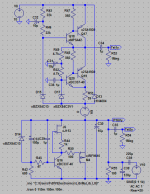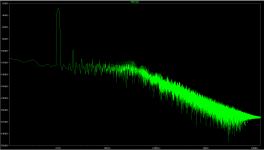As I said, go and get one
Alternatively, if still not convinced, bring a nice bottle, and you may try mine
Deal...I will bring you a nice sagrantino!!

I loved DOS... got quite good actually.... then windows came up
I know...I loved it too....
You should have tried algol  Programming language generations - Wikipedia, the free encyclopedia
Programming language generations - Wikipedia, the free encyclopedia
P.s I'm still (now for more then 40 years) a computer programmer and system designer. And I do hate computers, and I do love algorithms.
P.s I'm still (now for more then 40 years) a computer programmer and system designer. And I do hate computers, and I do love algorithms.
Last edited:
You should have tried algolProgramming language generations - Wikipedia, the free encyclopedia
P.s I'm still (now for more then 40 years) a computer programmer and system designer. And I do hate computers, and I do love algorithms.
well that is not uncommon....love for the algorithm comes from the love for logic, then from algorithm to the actual computer you have to deal with lots of issue that come from debuggers, programmers, firmware on the machine itself and so on....which makes it easy to hate!
We have discussed how to measure PSUs and why they have an effect on sound.
Maybe this can shed some light on it :
DIY Test Equipment for Audio and Ham Radio Enthusiasts
Maybe this can shed some light on it :
DIY Test Equipment for Audio and Ham Radio Enthusiasts
We have discussed how to measure PSUs and why they have an effect on sound.
Maybe this can shed some light on it :
DIY Test Equipment for Audio and Ham Radio Enthusiasts
Has this test been done with real builds or are these simulations ?
Where is FdW shunt ?
Has this test been done with real builds or are these simulations ?
Where is FdW shunt ?
Can't do the real measurement, I do not own the AP
Attachments
We have discussed how to measure PSUs and why they have an effect on sound.
Maybe this can shed some light on it :
DIY Test Equipment for Audio and Ham Radio Enthusiasts
Did you perform these measurements?
No.
There was a listening test on PSUs in Linear Audio.
They used a rather simple Borbely line stage that did not have much PSU rejection.
The outcome was rather suprising.
The Jung-Didden series regulator did best and the Salas shunt did quite poor.
Usually a shunt should work better but that was not the case here.
So a search was undertaken why that was.
A distortion analysis by FFT of the output voltage correlated with the sound impressions.
The PSUs that did not have high order distortion artifacts did best.
There was a listening test on PSUs in Linear Audio.
They used a rather simple Borbely line stage that did not have much PSU rejection.
The outcome was rather suprising.
The Jung-Didden series regulator did best and the Salas shunt did quite poor.
Usually a shunt should work better but that was not the case here.
So a search was undertaken why that was.
A distortion analysis by FFT of the output voltage correlated with the sound impressions.
The PSUs that did not have high order distortion artifacts did best.
No.
There was a listening test on PSUs in Linear Audio.
They used a rather simple Borbely line stage that did not have much PSU rejection.
The outcome was rather suprising.
The Jung-Didden series regulator did best and the Salas shunt did quite poor.
Usually a shunt should work better but that was not the case here.
So a search was undertaken why that was.
A distortion analysis by FFT of the output voltage correlated with the sound impressions.
The PSUs that did not have high order distortion artifacts did best.
wow!! This is pretty interesting.
Thanks for sharing it as it helps understanding correlation between good sounding PSU and measurements.
I am wondering if anybody here has the gear to perform these tests.
I could do it, my problem is time.
posted mine while you were posting yours
Do we need AudioPrecision System to perform the output injection's test?
So it is a loop test almost since the output of the generator is cap coupled to the output of the PSU and output of the PSU gets connected cap coupled again to the input of the Analyzer.
Quantum is a pretty nifty product, I saw it some time ago and found it interesting.
However looking at the specs, a good quality soundcard like M-Audio pro-fire or EMU have little better figures.
I use spectra plus and noise floor is down to -140-150dB.
If I understood correctly, this is a test that doesn’t require injection transformer with loop analysis where you must have a network analyzer type of instrument.
If so, I can perform tests too but I got to say that given I am working on schematic, simulation, layout, assembling, tests and who knows what’s more….plus I work full time….ahahahah…..time is a little issue with time for me too.
Anyway that post was very, very instructive, thanks again for sharing it with us.
Quantum is a pretty nifty product, I saw it some time ago and found it interesting.
However looking at the specs, a good quality soundcard like M-Audio pro-fire or EMU have little better figures.
I use spectra plus and noise floor is down to -140-150dB.
If I understood correctly, this is a test that doesn’t require injection transformer with loop analysis where you must have a network analyzer type of instrument.
If so, I can perform tests too but I got to say that given I am working on schematic, simulation, layout, assembling, tests and who knows what’s more….plus I work full time….ahahahah…..time is a little issue with time for me too.
Anyway that post was very, very instructive, thanks again for sharing it with us.
- Status
- This old topic is closed. If you want to reopen this topic, contact a moderator using the "Report Post" button.
- Home
- Source & Line
- Analogue Source
- Masterpiece


